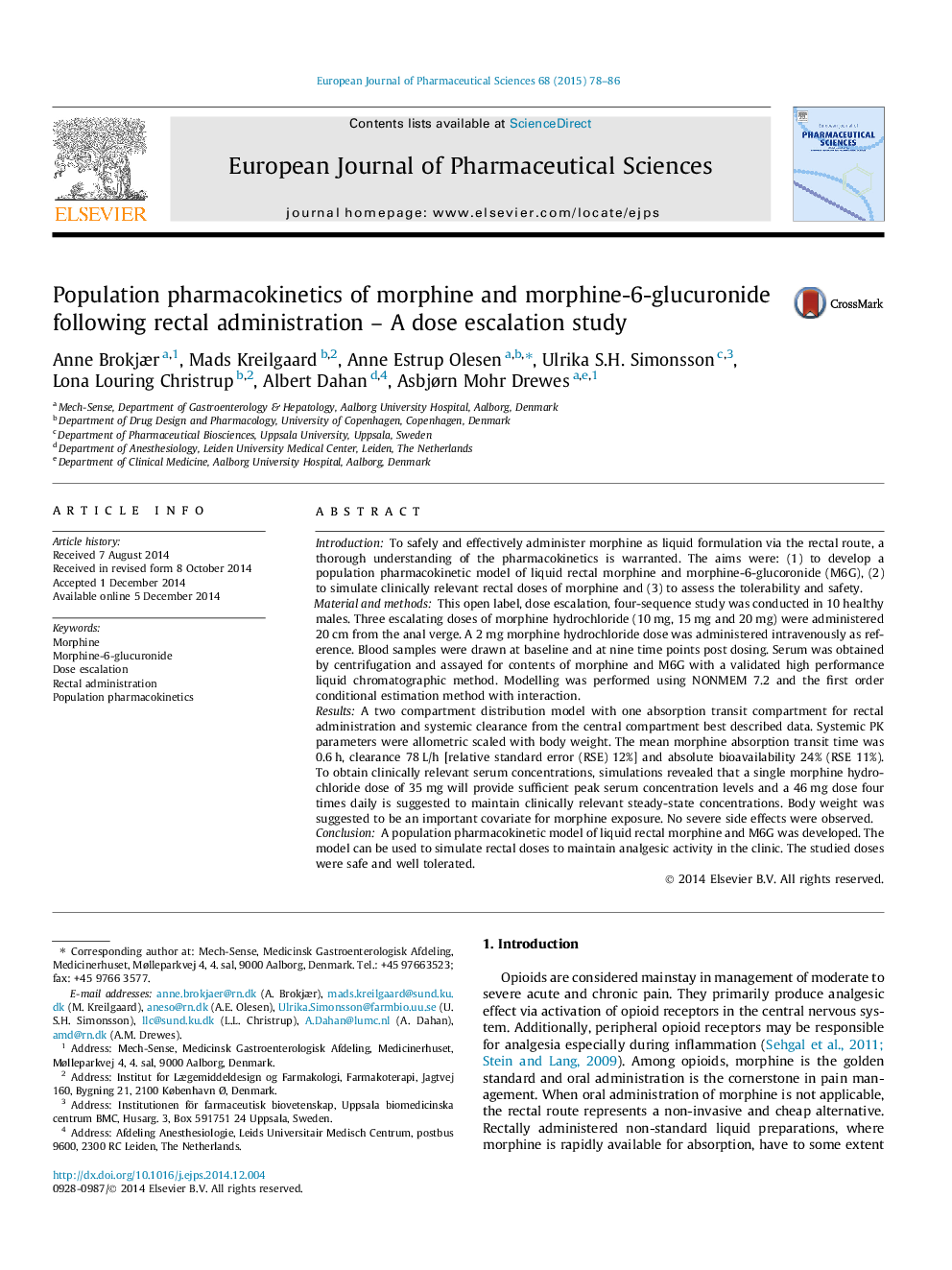| کد مقاله | کد نشریه | سال انتشار | مقاله انگلیسی | نسخه تمام متن |
|---|---|---|---|---|
| 2480350 | 1556182 | 2015 | 9 صفحه PDF | دانلود رایگان |

IntroductionTo safely and effectively administer morphine as liquid formulation via the rectal route, a thorough understanding of the pharmacokinetics is warranted. The aims were: (1) to develop a population pharmacokinetic model of liquid rectal morphine and morphine-6-glucoronide (M6G), (2) to simulate clinically relevant rectal doses of morphine and (3) to assess the tolerability and safety.Material and methodsThis open label, dose escalation, four-sequence study was conducted in 10 healthy males. Three escalating doses of morphine hydrochloride (10 mg, 15 mg and 20 mg) were administered 20 cm from the anal verge. A 2 mg morphine hydrochloride dose was administered intravenously as reference. Blood samples were drawn at baseline and at nine time points post dosing. Serum was obtained by centrifugation and assayed for contents of morphine and M6G with a validated high performance liquid chromatographic method. Modelling was performed using NONMEM 7.2 and the first order conditional estimation method with interaction.ResultsA two compartment distribution model with one absorption transit compartment for rectal administration and systemic clearance from the central compartment best described data. Systemic PK parameters were allometric scaled with body weight. The mean morphine absorption transit time was 0.6 h, clearance 78 L/h [relative standard error (RSE) 12%] and absolute bioavailability 24% (RSE 11%). To obtain clinically relevant serum concentrations, simulations revealed that a single morphine hydrochloride dose of 35 mg will provide sufficient peak serum concentration levels and a 46 mg dose four times daily is suggested to maintain clinically relevant steady-state concentrations. Body weight was suggested to be an important covariate for morphine exposure. No severe side effects were observed.ConclusionA population pharmacokinetic model of liquid rectal morphine and M6G was developed. The model can be used to simulate rectal doses to maintain analgesic activity in the clinic. The studied doses were safe and well tolerated.
Figure optionsDownload high-quality image (156 K)Download as PowerPoint slide
Journal: European Journal of Pharmaceutical Sciences - Volume 68, 20 February 2015, Pages 78–86